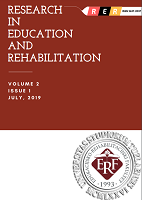PSYCHOSOCIAL CONSEQUENCES AND OTHER RISK BEHAVIORS CAUSED BY GAMBLING OF HIGH SCHOOL STUDENTS IN THE ŽIVINICE TOWN AREA
PSYCHOSOCIAL CONSEQUENCES AND OTHER RISK BEHAVIORS CAUSED BY GAMBLING OF HIGH SCHOOL STUDENTS IN THE ŽIVINICE TOWN AREA
Author(s): Adela Jahić, Meliha Bijedić, Lejla Kuralić-Čišić, Almedina HrnjićSubject(s): Sociology, School education, Social psychology and group interaction, Substance abuse and addiction
Published by: Edukacijsko-rehabilitacijski fakultet Univerziteta u Tuzli
Keywords: adverse effects; adolescents; delinquent behaviour;
Summary/Abstract: The aim of the study is to determine the intensity of high school students' involvement in gambling activities, given the level of adverse consequences with gambling and the tendency to engage in other risky behaviors. The survey was conducted in 2016 on a sample of 340 students of both genders (170 male students and 170 female students) in high schools in the City of Živinice. For the purposes of the survey, two measurement instruments were used: the Zimbardo Time Perspective Inventory (ZTPI), (Zimbardo and Boyd, 1999) for the male and female gender, and the International Personality Item Pool (IPIP) for the male and female gender (Goldberg, 1999). The survey results show that the largest percentage of respondents suffer psychological consequences of gambling, as well as interpersonal and financial consequences. Regarding other risky and unacceptable behaviors, the following were identified: lenient delinquent behaviors, undesirable normative behaviors, risky gender behaviors, psychoactive substance abuse (PAS), and violent behavior in close relationships. The results of the Z-test and the associated P-value (P <0.05) show that there is statistically significant difference in the percentage (proportion) of students prone to certain forms of unacceptable behavior between gambling and non-gambling students. For all of these forms of unacceptable behavior, a significantly higher percentage (proportion) of students who gamble is prone to these behaviors compared to students who are not prone to gambling.
Journal: Research in Education and Rehabilitation
- Issue Year: 2/2019
- Issue No: 1
- Page Range: 18-29
- Page Count: 12
- Language: English

